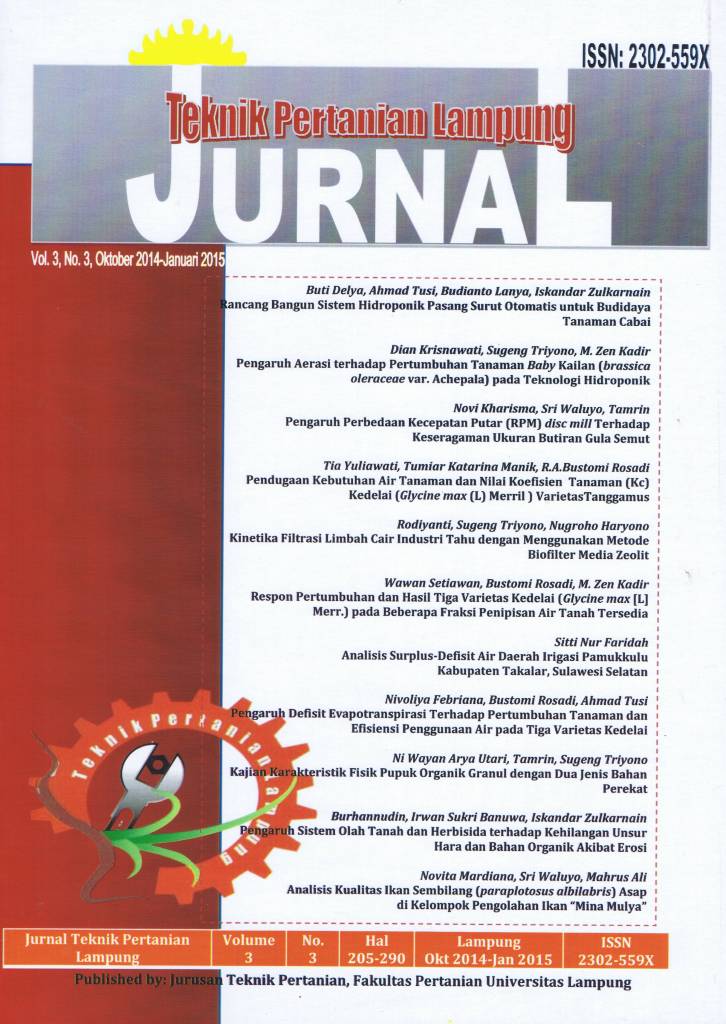THE EFFECT OF DIFFERENT ROTATIONAL SPEED (RPM) DISC MILL TOWARD THE UNIFORMITY INDEX OF BROWN SUGAR
DOI:
https://doi.org/10.23960/jtep-l.v3i3.%25pAbstract
The aims of this researchwere to find out the effect of different rotational speed of discmill to the size spreadingand uniformity index of brown sugar and to knowthe optimal rotational speed of disc mill producing size of 0,8
to 1,2mm. The parameters observed were water content, fineness modulus (FM), uniformity index, grain yield,
bulk density, and color. The research was conducted at five variations of rotational speed which were 800, 900,
1000, 1100, and 1200 rpm with 1500 g sample for each variations.The results show that the water content of
brown sugar is between 1,30 and 1,76%, the fineness modulus is around 1,99 to 4,74, the particle size is around
0,41 to 2,79mm, the highest grainyield reaches 45,32%atactual speed of 900 rpm, and the range of bulk density
is about 721,07 to 740,40 kg/m3. The color of the middle fraction compared with commercial sugar is not
significantly different. The color indexes of middle fraction in each treatment are IRED 0,41 to 0,43, IGREEN around
0,35, and IBLUE 0,22 to 0,24. Based on the analysis of variance and Duncans method (± < 0,05) show that the
rotational speed (rpm) significantly affects to the particle size, fineness modulus, and grain yield, but not to the
water content, bulk density and color.
Downloads
Published
2015-01-30
Issue
Section
Articles
License
- Authors who publish with this journal agree to the following terms:
- Authors retain copyright and grant the journal right of first publication with the work simultaneously licensed under a Creative Commons Attribution-ShareAlike 4.0 International Lice that allows others to share the work with an acknowledgement of the work's authorship and initial publication in this journal.
- Authors are able to enter into separate, additional contractual arrangements for the non-exclusive distribution of the journal's published version of the work (e.g., post it to an institutional repository or publish it in a book), with an acknowledgement of its initial publication in this journal.
- Authors are permitted and encouraged to post their work online (e.g., in institutional repositories or on their website) prior to and during the submission process, as it can lead to productive exchanges, as well as earlier and greater citation of published work (See The Effect of Open Access).
Jurnal Teknik Pertanian Lampung

JTEPL is licensed under a Creative Commons Attribution-ShareAlike 4.0 International License.

